|
It's going to be late!
Hello friends! Tarot in Wonderland, illustrated by Eugene Smith, will be available in mid- to late April. Sadly it is stuck on a boat between here and China and will be a little late…just another Trickster experience that has been part of this deck from the beginning. In fact, it has been so delayed for so many reasons from the beginning that it is dedicated to Hermes, my favorite expression of the Trickster. Even though the subject matter is whimsical and supposedly nonsensical, it is one of my deepest decks yet. Having loved Carrol’s work from childhood through writing innumerable papers on it in college, this deck was a joy to create. Part of the fun was exploring the similarities between tarot and the Alice stories. Some topics discussed in the book include: identity, searching for wisdom, and opposites. Another direction we consider is reading mundane things as sacred texts. Below is an excerpt from the book explaining this idea. Below that is an excerpt about the Hierophant, a suitable match to go with a discussion about sacred texts. I hope you enjoy this and ultimately, the deck. Tarot in Wonderland Sacred Texts Many spiritual paths have sacred texts. Christians have their Bible; Muslims, the Quran. Many pagans say that the earth is their sacred text. I do not think that a sacred text must be ordained or approved by any organization. You can have your own sacred text. Witches have their Books of Shadows, where they write all the important things that they learn as well as their spells. It is their personal sacred text. Many tarot readers consider their decks as an unbound sacred book that can be shuffled to provide wisdom about any situation. Vanessa Zoltan and Casper ter Kuile created the Harry Potter and the Sacred Text podcast in order to read a series that they love as a sacred text. According to Zoltan and ter Kuile, one defining characteristic of a sacred text is that it is generative. What they mean is the work is not static but continually provides new and insightful information. This is one reason that tarot readers love their cards. Tarot readers can use a deck for years and yet still see something new in the cards. Not only that, but consider this: we do not have a single complete existing original tarot deck and yet throughout the centuries we continue to create more decks that show the wisdom of the cards in different ways. Even decks with similar themes are all still unique from each other. There are lots of cat-themed tarots and they are all different. Likewise, there are multiple versions of fairy, magic, witch, animal, Steampunk, and even Alice-based decks. There is room in the world for all of them because tarot is generative and each incarnation shows us something different. The Alice stories are read by many, whether they know it or now, as sacred texts. In fact, in this book, we will, for brevity’s sake, often refer to the Alice stories as “the text.” The stories are filled with so much symbolism and playfulness and enough questions to allow space for expansion. That expansion can go in so many directions. People view the books through various lenses: psychological, mathematical, logical, political, historical, biographical, and literary, just to name a few. This is similar to tarot because different readers work with the cards from psychological, spiritual, therapeutic, or psychic approaches. Further, if you consider all the movies, plays, spin offs, books, and comics that are based on or inspired by Carroll’s work, we have to admit that the Alice stories are certainly generative.
V, The Hierophant
Through the Looking Glass These days, The Hierophant is one of the most disliked cards in tarot. That is because people have too narrow a view of The Hierophant because traditional imagery shows this character as a Roman Catholic Pope. The Pope is just manifestation of the spiritual, ethical, or philosophical teacher archetype, which is what this card really is. The Hierophant, regardless of the specific image used to illustrate this card, represents the underlying belief system that guides our behaviors and actions. Different versions of this archetype…a Catholic Pope, an evangelical pastor, a popular philosopher, a self-help guru, a motivational teacher…all share a similar quality: they suggest a possible way that the world works. Once you understand your own beliefs, then you can measure all your decisions, actions, words, and goals against that worldview. The Hierophant as a card doesn’t so much represent how to think as to the importance about what you think. What you accept as the “truth” about the world determines your behavior. When our behavior is at odds with our beliefs, we suffer severe emotional, spiritual, and psychological (and sometimes physical) distress. The Cheshire Cat explains to Alice how Wonderland “works” and about the importance of knowing one’s goals. Some of the most famous lines (and there are so many) from the Alice stories are: “But I don’t want to go among mad people,” Alice remarked. “Oh, you ca’n’t help that,” said the Cat: “we’re all mad here. I’m mad. You’re mad.” The Cheshire Cat gives an explanation that hinges on the idea that no one knows what is real and what is false. When his remarks are pushed further by philosophers and other great thinkers (as so much in the Alice stories has been), discussions include the inability to know for certain whether one is in a dream while one is in the dream. Likewise, when one is “mad” or what we would call suffering from mental illness is it possible to know that one is in a state of insanity? The idea of madness continues with the Mad Hatter and March Hare. I’ve heard that a basic definition of madness is when what is in our heads doesn’t match what is outside our heads, or what some call reality. To be in good mental, emotional, and spiritual health, our internal lives (our beliefs) must match our external lives (our actions). Alice asks for directions, but has no destination in mind. The Cat responds with “then it doesn’t matter which way you go.” This echoes wisdom from the Talmud that says “If you don’t know where you are going, any road will take you there.” If you have no goals, no intentions guiding your path, then what you do doesn’t matter. The Cat and the Talmud don’t mean goals like “make six figures” or “start a successful business,” at least not as ends in themselves. We are talking about core beliefs, about why we are here, and about what we believe we are meant to do. Down the Rabbit Hole In a reading, The Hierophant invites us to examine our actions and measure them against our beliefs. If they are lining up but things are still feeling wrong, then perhaps it is time to re-examine our guiding principles. If there is a gap between the ways in which we behave and what we claim to believe, then it is time to tighten up that space and start being the people that we aspire to be. When we are confused about which path to take or which way to go, we often turn to the cards for guidance. This card says that you need no outside advice but instead, but instead to do that which in your heart of heart you know to be the right thing. Keywords: education, teaching, learning, knowledge, conformity, tradition, institutions, group identity, values, guidance, orthodoxy, rites, blessing, status quo, social conventions To pre-order through Amazon, click the picture below!
0 Comments
People who know me know that I love podcasts. One that I really enjoy is Harry Potter and the Sacred Text. If you are a Harry Potter fan, I highly recommend this podcast. The hosts, Vanessa Zoltan and Casper ter Kuile, don’t just talk about the books; they talk about them as if they are sacred, as if we can find wisdom and revelation in them. A book doesn’t necessarily have to sanctified by someone or some organization to be sacred. They read the books, one chapter per week, and then examine the chapter in details through a theme, like forgiveness, love, humor, loneliness, commitment, being a stranger, change, confusion, etc. Another thing they do is draw sacred practices from different traditions, practices that were designed to be used with that tradition’s sacred text, and use them with the Harry Potter stories. One that most of us are familiar with is Lectio Divina. Another is Ignation Contemplation, which is very similar to something many tarot lovers already do: imagine the scene and put yourself in it. Vanessa and Casper introduced me (through their podcast) to a new practice called Pardes. It’s from the Jewish tradition and is a method for exploring a specific passage in a text, usually the Torah. It is such an easy thing to extrapolate this practice to a tarot card. It is only four steps. I almost said “four easy steps” but I don’t think they are necessarily easy. Spiritual reading and contemplation isn’t like vegging out binge watching The Magicians or something (however, it is also an activity I can recommend).
Give it a try and let me know what you thought. Better yet, try it with some friends or a meet up group. Enjoy! May you always find new ways
to see the beauty in the things you love. 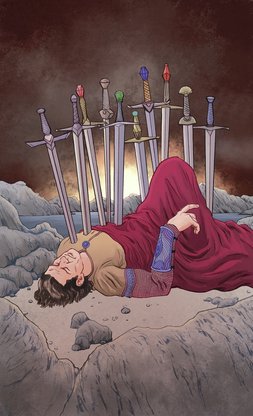 10 of Swords from Llewellyn's Classic Tarot by Eugene Smith 10 of Swords from Llewellyn's Classic Tarot by Eugene Smith Recently I heard the idea that we should look at hard times in our lives as allies because they help us to become the people we are meant to and want to be. I know it is common for us to sometimes advise people to “look on the bright side” or to consider that “every cloud has a silver lining,” but these platitudes are cold comfort and feel, well, just lame. They feel that way because we have a larger, more important idea about hard times that shapes our underlying understanding of the role that hardship and challenge play in our lives. In modern Christianity, at least in some denominations (particularly the megachurches and fundamentalists), there is the idea that if one lives in a way pleasing to God that one will prosper because God, being happy with you, will reward you with material comfort. This idea isn’t only embedded in Christianity. It is part of our New Age understanding of the world, too. We have ideas like “if you are on the right path, things will open up and be easy for you.” The Law of Attraction is another example. If only you believe strongly enough and be VERY careful of every word that comes out of your mouth, the Universe will reward you. And variations of that quote that I’ve seen attributed to various writers, “And, when you want something, all the universe conspires in helping you achieve it.” Somehow we’ve gotten it in our heads that having things go well and easy for us are rewards for and evidence of our good behavior and that when we experience hard times, we must have made some mistake and are experiencing a punishment. This kind of thinking is so dangerous. It leads to the “blaming the victim” notion that so many abuse victims have to deal with. It also can parallelize us from making any decision or taking any actions because every choice is fraught with concern over the outcome. The concern is not only the normal, what if this doesn’t pan out variety, but the deeper story we’ve attached to the outcome of our actions: all the world will know if we are good or bad. If we are successful, then clearly we are good people who are doing “life” right. If we suffer setbacks and hard times and failures, then we must have done something wrong, something more deeply and fundamentally wrong than just making a mistake. We tell ourselves terrible lies like (or just as bad, we believe these things of others): We expressed a negative thought and therefore the Universe rained tribulations on us. We didn’t properly follow our bliss, therefore we are living a pale, sad life. We sold out and kept our muggle job because we needed the insurance and don’t have the time or energy to pursue more high-minded pursuits. Maybe hard times aren't measures of how great or enlightened or lousy we are. Maybe hard times just sometimes happen to everyone. Maybe they are part of life because, well, because they are part of life. More philosophically and more importantly, maybe they are part of life because they are our allies who help us learn and grow. May you make allies of difficulties. May you never judge yourself by the outward appearance of your life. May you never compare yourself to others. An Important but Forgotten Lesson from the 5 of Pentacles 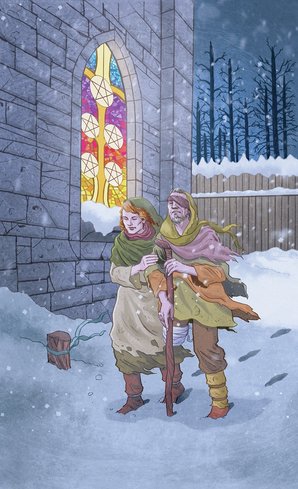 5 of Pentacles from the Llewellyn Classic Tarot by Eugene Smith 5 of Pentacles from the Llewellyn Classic Tarot by Eugene Smith As we know, the tarot has evolved over the centuries. Some of our most beloved cards don’t look like they did in the earliest decks. The Fool is no longer a madman whose bare butt is bitten by a dog. The Magician is no longer a con artist. The High Priestess is no longer a fake pope. Strength is no longer a strong man bludgeoning a lion with a club. Strangely, some cards that should have evolved to reflect our changing world and evolving consciousness have not. The Hierophant is a holdover from a time when the church was an important part of people’s lives. Judgement retains its “last judgment” qualities, a story from a mythology that no longer serves us (at least how it is currently interpreted). Many of our modern decks are inspired and shaped by the Rider Waite Smith Tarot, which was designed by Victorian Christian Mystics. The Christian symbolism meant something different to those people than it does to most modern tarot readers, yet instead of evolving the symbolism we change the meanings to something more negative, reflecting our issues and wounds. I can only imagine we haven’t brought these cards up to date with our current beliefs because we are still too wounded, still haven’t done our shadow work in these areas, and still aren’t ready to move on. Another card that has not evolved and consequently has taken on negative overtones is the 5 of Pentacles. It usually shows people in desperate physical need outside of a (usually) Christian church. One way we interpret this is to say that our religious institutions have let us down, have locked us out in the cold, and have failed in their job to take care of their people. In the past, churches did (and for current, active members still do) provide services and help for members. Churches were (and for some, still are) communities. When someone is a member of a community, they participate. If we are no longer active members of a church, it is presumptuous to expect that community to take care of us. A different lesson from the 5 of Pentacles might be the importance of community. If the old religions, the old communities no longer serve us, then perhaps our response should be to form new communities that do serve us. To be in community means to be involved, to accept the responsibilities of and commitment to something greater than ourselves. Some of us have shifted our idea of where responsibility for helping others comes from, namely, the government. However, besides voting (maybe), paying taxes, and perhaps protesting or posting indignant or angry comments, how involved with and committed to our government are we? Are we really part of our local governmental communities? If not, how realistic is it to expect that institution to take care of us in ways that matter to us most? When we create and are involved in community, we give of ourselves in many ways. We are present. We help identify problems. We help create solutions. We are active. We help. If we are invested in a community, we give and in turn can expect support and help in turn if we need it. Unfortunately, most organized religions don’t suit us (by us I mean people reading this blog, which probably means tarot readers and/or alternative thinkers). Unfortunately, most of us focus on national politics (particularly these days) where we often feel that we have little influence (and this certainly feels true, at least to me). Unfortunately, most of us are not involved in local politics because of whatever we prioritize over involvement in that form of community. To expect assistance from a community, one must be involved with that community. It would be a like a distant family member with whom you’ve never had a relationship, who was never involved in the family in general, and indeed denigrated the family, asking for help in an entitled way. There is so much talk of entitlement these days and we all suffer from it. We feel entitled to help from institutions/communities that we’ve never been truly involved with or are even actively denigrating. The 5 of Pentacles suggests that being involved in and committed to a community may have its price, but it also has benefits. Instead of railing against ineffective or inappropriate (for us) communities, the 5 of Pentacles invites us to form new communities that better reflect our ideals and gives us meaningful ways to serve, so that we may be served in our times of need. May you find community. If you cannot find it, may you make it. Tarot as Sacred Text
One of the reasons that tarot fascinates so many people for so long (often for the whole of their lives) is that there are so many ways to look at and use the cards. Divination is one way and perhaps the most common, and certainly valuable. I also like to see the cards, individually and in groups, as a sacred text that teaches me about the mysteries of the world and of myself. Sometimes these insights deviate from the way one may interpret a card in a reading. Sometimes they can add a new facet or understanding of a card that can be used while interpreting a divination. Sometimes they really shake up a long held belief or understanding of a card. The cards are called keys for a reason: they open doors to entire worlds of wisdom. I don’t know about you, but sometimes I spend so much time in one particular part of a world that I get comfortable and begin to think that I’ve explored the whole place. For example, the other day tarot showed me an interesting way to look at a series of cards: The Magician, The High Priestess, The Empress, The Emperor, and The Hierophant. 1. The Magician is the expression of our will via our ego. By ego I mean our sense that we are unique and separate individual beings. 2. The High Priestess is the expression of our intuition via our soul. By soul I mean our sense that we are connected to all things. The Magician and High Priestess together describe the state of being human, that strange dichotomy that drives us: the desire to express our individuality in the world and the yearning to reunite with all that is. 3. The Empress is our ability to create via our actions. 4. The Emperor is the direction of creativity via our intellect. Together these four cards are like the four pillars of our identity: what drives us, what we do, and how we do it. 5. The Hierophant is the movement of our identities toward our ideals via change. Many people miss the value and inherent energy of the Hierophant due to wounds caused by the imperfect expression of the Hierophant energy by others (both individuals and organizations) in the past. Because it is easy to dislike “organized religion,” which admittedly fails so many of us, we can easily dismiss the true value of the Hierophant. This is just as dangerous as disregarding the value and positive aspects of the Empress because our mother wasn’t a great mom. When we allow our wounds to denigrate the true wisdom and gift of an archetype, we put it in shadow. Things in our shadows (individually and collectively) always find a way out and when they do it isn’t pretty because anything left in shadow for too long will grow twisted and punchy. While we easily understand the numerological connections of the Magician, High Priestess, Empress, and Emperor, the association of the Hierophant with the number 5 baffles many people. Fives, after all, are about change and, for better or worse, most of us see the Hierophant as rigidity rather than innovation. That is too bad because we miss out on the gift of the Hierophant, and it is such an important gift for those of us on the path to becoming our best selves and living our true soul’s purpose in the world. The Hierophant is about change.
Taken together, these five cards illustrate how we, as spiritual beings having a human experience, can move forward toward continued spiritual, mental, and emotional growth. May your mind and heart always be open to the wonders in the cards. May the cards reveal their expansive wisdom to you. May you use these gifts to make yourself and the world better. Edited to add: days later and it suddenly occurs to me that in some numerology systems, 5 is the number of man, that is to say, humans. In Christian Biblical numerology, it is also the number of grace.
I subscribe to none of those. To me, the Wheel of Fortune is a Trickster card, a card of uncertainty. We spin the wheel and takes our chances. Who knows what where the Wheel will stop? Not this tarot reader. I firmly believe that there are some things we are not meant to know and there are cards in the deck that represent this.
Peeking into the future is just one use for tarot. It’s most important function is reading the cards as a sacred text. The Wheel of Fortune is excellent as a sacred text. Here’s the lesson. Things happen. We cannot always control things that happen. I know that is not a popular belief but it is true, isn’t it? The secret golden nugget in the Wheel is: the closer you stand to the center of the wheel, the less likely you are to lose your balance. If we think of our lives as the wheel, the closer we are to our own center, which is defined by our core values, the easier it will be to stay steady, even if the wheel spins fast or lands somewhere that is just plain not cool. Because this year is associated with the Wheel, we can be sure it will be one of change. The 5s are also associated with change and I do think we are going to see the energy of these cards throughout the year. The 5 of Wands will bring a lot of competitiveness and ego. The 5 of Cups will leave us lost in grief instead of actively grieving. The 5 of Swords will bring us Pyrrhic victory after Pyrrhic victory. The 5 of Pentacles is perhaps the most troubling in this case as it shows the potential for a complete separation of our resources from our values (both individual and collective). That what this year is going to teach us. We are going to be tested to see what our priorities and values really are. Unfortunately, our country feels (to me) like it sees its role as a for-profit business, which is why, apparently, so many of us voted to put a businessman at the helm. But I never thought that our country was a business. It is a representation of our values…or it should be. If it is not performing that function, then what do we do? How do we make sure our values are expressed in the world? What are our options? This year is going to be challenging. It will also be a gift. We will finally get to find out exactly who we are. I’ve heard someone say “show me your schedule and budget, I’ll name your values.” I couldn’t agree more and this year is going to be like a final exam. Who have you been striving to become? What is that person going to do in the face of real need…human need, creature need, earth need? May we all hold on tight to our values, not get distracted by the world spinning around us, and stay calm and centered as we help keep the world on course.
This version of the 8 of Pentacles is one of my favorites because it shows the sweat and challenge of hard work. Yes, she has tools and materials, the only way she will improve is to work. Through practice and discipline she learns what she needs to achieve exactly what she wants.
Have you noticed that there are often these words that float to the surface of popular consciousness? Often they are ones we've not used often (or at all) but suddenly, they fall off our lips as if they are part of our understanding of the world. Lately, for me, it's been the word "iteration." Usually I feel annoyance at these words, as if they are some lame affectation. That annoyance is stupid, I know. With this particular word, I've had to fight that irrational reaction because what this word means is so close to what I believe as someone who is always trying to master something new and as a teacher. Iteration is a procedure in which repetition of a sequence of operation yields resutls successively closer to a desired result. Technically, we could use the word "draft," although interation feels more active with more focus on the act of repetition as a learning experience. Repetition is, in so many areas of life, the single best way to get better at something. As many of you know, I'm working to become a better artist. I took classes to get me started but after a point, taking in more information wasn't affecting my actual art. It was only when I started practicing what I'd learned, making mistakes, figuring out what went wrong, and deciding things to try to correct the mistakes did I actually start improving. A lot of art tutorials by established artists feature "cheap supply challenges." The point of these is to show that while quality supplies are awesome, they are not necessary to create good art nor is not having them an excuse not to practice. If you develop skill, you can create with whatever is at hand. The best supplies or tools are no substitute for skill. Skill comes through practice. Saying that we will get better once we take that one class or acquire that specific deck or tool actually undermine your progress and take away your power. So as we all move forward, reaching toward becoming our best selves in whatever areas we are focusing on, the 8 of Pentacles is here to remind us that while we should enjoy and utilize whatever can support us we need to know that practice does indeed make perfect. Make messes, make mistakes, try new things. May you commit to the discipline of your chosen goal. May your successes inspire you. May your mistakes teach you. May you find joy in the process. Many people who love tarot consider it in some way sacred, depending on their definition of that word. My definition of a sacred text is very broad and I'm not the only one. The wonderful podcast, Harry Potter and the Sacred Text, has the tagline, reading something we love as if it were sacred. The podcast is so good and you should listen to it. First, just because it is deep and human and real. Second, because their practices are so easily applied to tarot or whatever you love. The way "sacred text" is defined varies depending on who you ask. One of the characteristics I've heard that rings true for me is that a sacred text is generative. That is, it inspires and/or is directly connected to creating new material. Of course I love this idea because I believe that the Divine did not complete the creation of the universe but rather left it unfinished and invited us, all of us, to participate in its continuing co-creation. Also, if something doesn't support or inspire new life or creations, I don't see how it can be sacred. Tarot, as a literary and art form, has proved to be very generative, offering us versions of the Rider-Waite-Smith that look at different themes through that lens and bold decks that take on completely new lenses. Wisdom can be found in all of them. Today I wanted to stretch myself out of my comfort zone and take a look at a page from an unusual version of tarot, the Ace of Swords from the Circle of Life Tarot. A nude pregnant woman sits on the ground, looking at her full belly in wonder, curiosity, and admiration. Near her is a large, ripe pumpkin fully of sunshine and seeds and a sword is thrust into the ground. Hovering in the air, soft underbelly toward us, a huge beetle tightly clutches a sword/spear with the tip at its head and the shaft running along the length of its body.
All the sexual symbolism makes this a unique Ace of Swords. Usually associated with new beginnings or new ideas, the ripeness of this image reminds us that beginnings lead to endings. This card is reminder that ideas bear fruit and manifest in the physical world, particularly when we nurture them. Then from that initial idea or seed, many more will come and, if fed, will likewise bear similar fruit. Select the sword or idea you plan to wield as you co-create this world. It will make ripples, resonances, and consequences that will affect you and all of life. I know things are hard for lots of us right now. We're afraid and angry. We do need to remember, though, that our words and ideas are creating the future...not a million years from now but like tomorrow future. We will live with the fruits of our words and thoughts. Calling other people monsters and saying exaggerated things, demonizing others, focusing on headlines and sayings rather than actual policies only feeds and nurtures the great divide and perpetuates more of the same. I could go on, but this small wise person says it all so well: CLICK HERE FOR HUMBLING WISDOM My blessing for you all today: May you find the heart center of your life. May your mind be filled with beautiful ideas. May the sweetness of your heart lovingly nurture them. Much love, Barbara PS What I really wish is that everyone could just settle down. This kind of energy is how a small, inconsequential action lights off a metaphorical powder keg. Seasons of Tarot
Lately I’ve been thinking less about tarot as a divinatory tool and more as a Sacred Text…an unbound book of wisdom. One of the reasons many of us use tarot as a tool of divination is to get advice on the “right” decision regarding choices we have to make. Tarot has proved useful to me and countless others in this capacity. However, my mind has been turning toward the idea of not making a decision because it will give us a particular desired outcome but because it is the right thing to do. These things are not, of course, mutually exclusive, but looking at questions from a different point of view can give us interesting information. Because of this change in focus, the coming weeks and months will bring you a series of essays about Tarot as Sacred Text. The essays will be about my musings and will hopefully inspire you to discover your own unique sacred wisdom within the cards that we all love so well. Summer is winding down. Every change of season brings feelings of endings and new beginnings, of change…sometimes a sense of satisfaction for a season well-spent or regret over missed opportunities. The changing seasons remind us that life is a cycle and this can be comforting, as we know that summer will come ‘round again, that the moon will wax and wane with predictable regularity. They also remind us that time passes and things can never remain the same. The wisdom I’m looking for here in the cards is how we can understand and face change in our lives. The seasons of our lives do not always follow the regularity of the change of seasons. We live for a season, whether a year or a decade or years, as perhaps a student of some particular course of study, as an employee for a company, as a partner to a person. Sooner or later all these seasons end. Sometimes we fight the endings, holding on far too long to what was, comfortable in the familiar, even though we know, deep in our gut or in the center of our heart, that it is time to say good-bye. There are lots of cards of endings in tarot. Death is one card feared by many, a very natural fear as death brings change and humans are generally not fans of change. Actual death can occur in many ways, from a quiet, natural, peaceful death to a sudden, unexpected, and tragic death. However, I think the Death card isn’t necessarily about all forms human death (by human death, I don’t mean only physical death but all the ways humans experience deaths in their lives). Rather, I see it as an organic, natural death, the kind that happens when we see an ending approaching, recognize it, honor it, accept it graciously, and move on to the next phase. We don’t always do that, though. We often, as mentioned earlier, fight it, deny it, clutch tightly to what we think is ours. In those cases, time continues to move on and the experience of death isn’t the easy, peaceful, organic death of the Death card but the sudden, frightening, chaos-creating death of the Tower card. We don’t leave a job we know we should and find ourselves laid off or downsized. We don’t leave a relationship that we know is no longer viable, we don’t end it when we can part as friends who once loved each other but instead end up hurting each other horribly and losing a connection, perhaps forever. Seasons mark beginnings and endings. The Fool card is one filled with the possibility of beginnings. Generally, an optimistic card of beginnings, we are presented with seemingly infinite possibilities. The other aspect of the Fool that we don’t usually acknowledge is that as soon as the Fool takes a step, certain possibilities are no longer available. Beginnings and endings all in one, which is why the Fool can sometimes feel scary. Saying yes to something means saying no to other things. Similarly, the World card, generally an optimistic card of completion (we almost always say “completion” as it sounds more positive than “ending,” which has a sadder feeling to it) also contains a beginning in it. After completing something, it is time to move on…because, as nature teaches us, nothing healthy is stagnant. We’ve achieved something worthwhile and are comfortable with the schedules and systems we’ve created to get there, whether it is a class schedule or a career trajectory. Once the goal is reached, we have to release those comforting routines in order to discover and create the new ones that will take us to our next adventure. Change is an important concept and one we all struggle with. In the next essay, we’ll continue to look at how tarot teaches us about change as we consider the 5s…usually not anyone’s favorite, no matter the suit. And rightly so. The 5s are cards of change. These are just a few of the ways I see the metaphoric idea of seasons in our lives through tarot. I’d love to hear some of your ideas and also if you enjoy reading longer essays such as this. |
Categories
All
Archives
September 2023
|
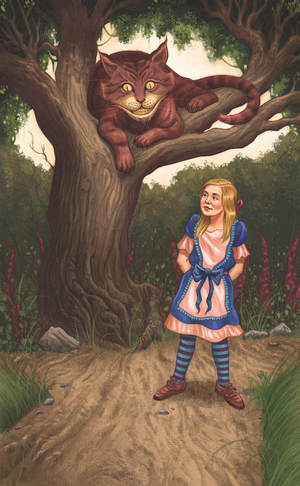

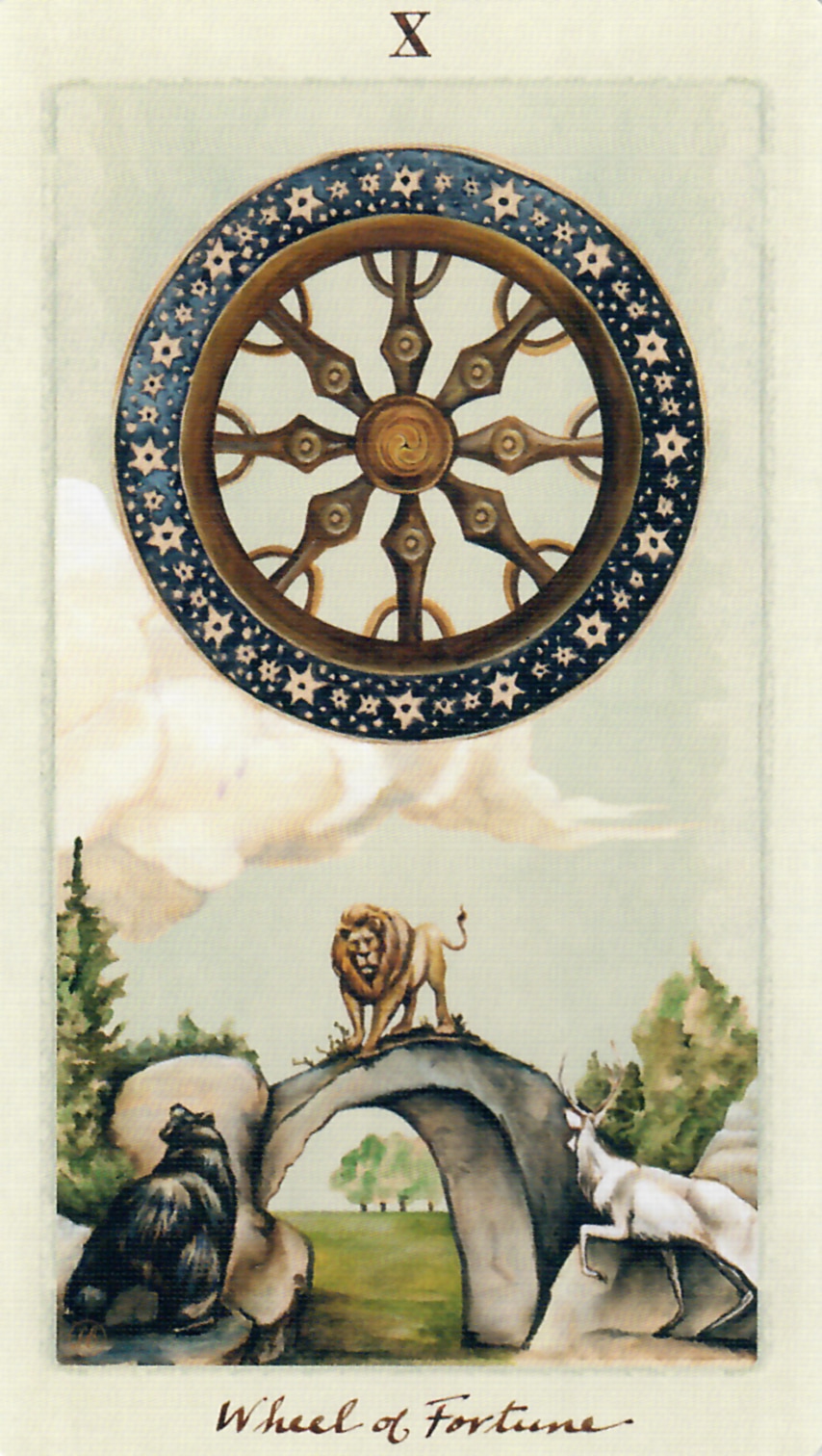
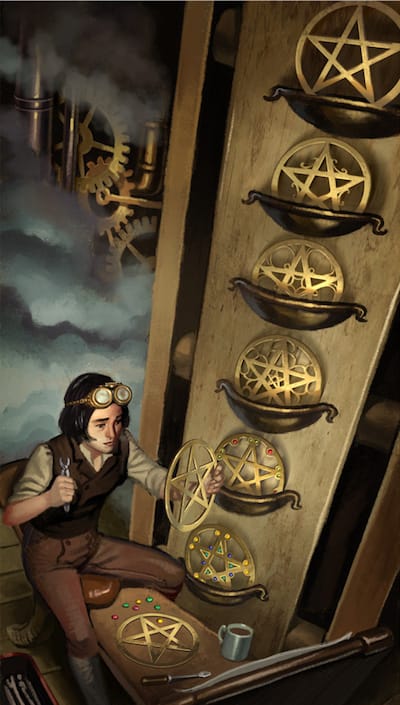
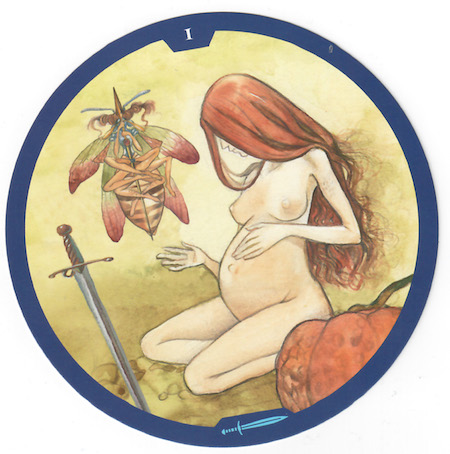

 RSS Feed
RSS Feed